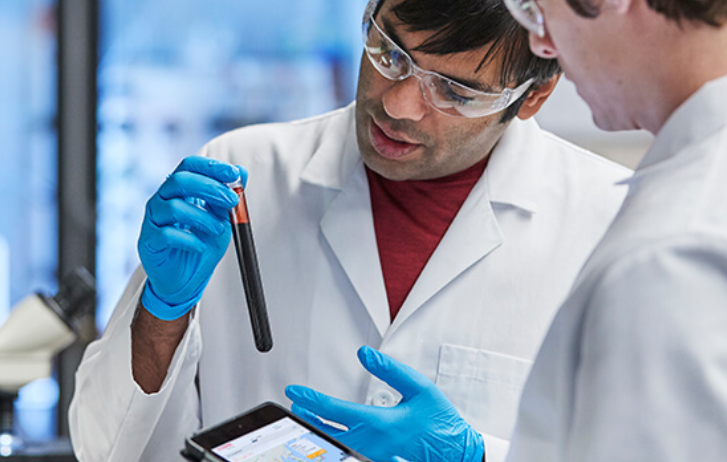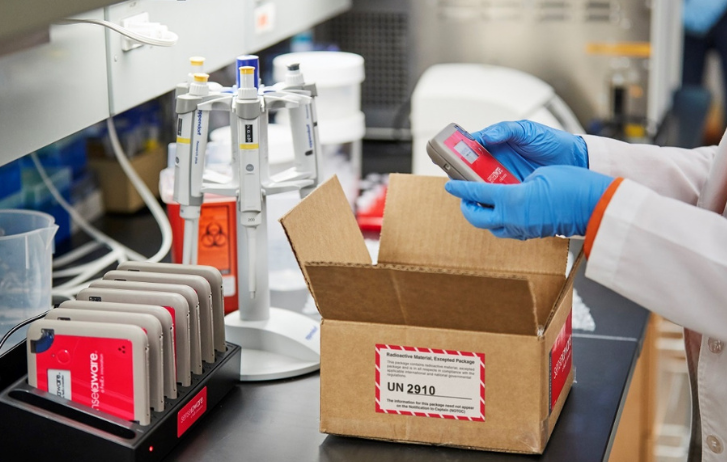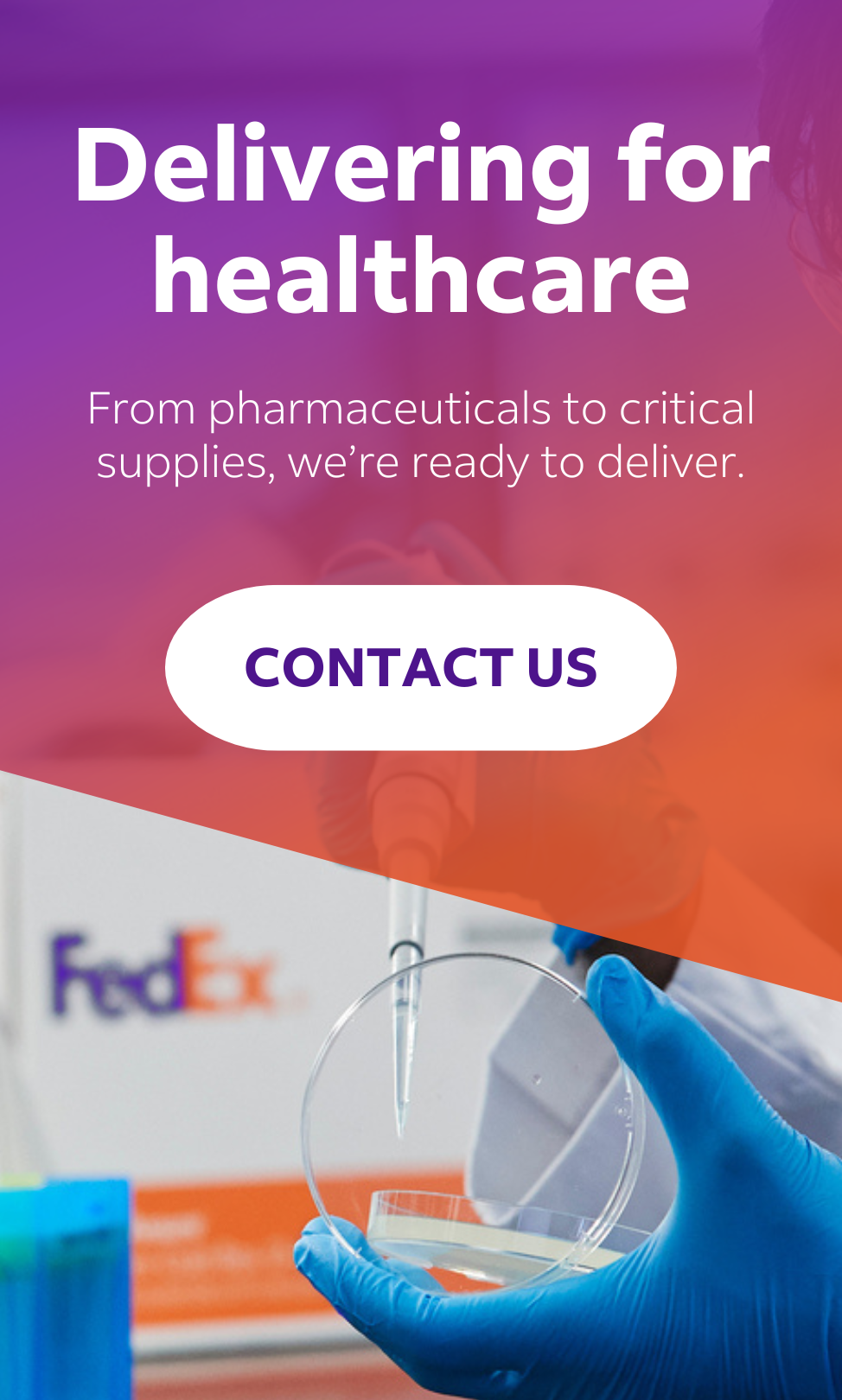
The Next-Gen Sensors Transforming Healthcare Logistics
By FedEx | First published: May 7, 2019 Updated: November 22, 2024
Healthcare shipments require delicate handling. By rapidly advancing supply chain visibility, next-gen sensor technology ensures products are transported safely.
- When it comes to pharmaceutical and healthcare logistics, the safety and security of bio samples and other critical shipments is key.
- Next-generation sensor technology is a gamechanger for healthcare, transforming supply chain visibility and protecting shipment quality.
- As tech-driven supply chains advance, healthcare customers can enjoy greater peace of mind than ever, trusting in the reliability of their important deliveries.
If you ask healthcare and biopharma industry leaders about the biggest risks in their global supply chain, they’ll often highlight one priority above all: product safety and security.
Safety is the beating heart of the entire value chain in healthcare. This was made clear during the COVID which permanently changed global health care, from accelerating the adoption of new technology to care delivery models.
Advancement in technology is driving change in healthcare logistics every day. Companies are focused on providing next-generation solutions from automation, AI, blockchain, and other technologies to protect integrity and safety. One major focus is next-generation sensors and their impact on supply chain visibility in healthcare.
Product safety: delivery is the last link in the chain
Product recalls and escalation of safety concerns bring the pharma supply chain supporting biologics-based manufacturing into sharp focus. And medical and life-science products can be transported the same way they were 25 years ago.
Issues that can arise include theft, damage, spoilage, wastage, expiration and weak monitoring of pharma cargo. Falsified, substandard, contaminated or even counterfeit drugs can be a problem too.
Drug creation is an extremely complex, time-consuming and expensive process. And it can take years. Sometimes, it can even take a decade. That’s why it’s so important not to derail the entire project at the final, crucial moments: delivery.
Every step in shipping chemical-based active pharmaceutical ingredients (APIs) and biologics-based ingredients presents challenges. They can make or break the integrity of the process. This in turn escalates pressures – and costs – on manufacturers.
The high cost of new APIs is driving a shift in biologics. Rapid growth in the biopharma industry means there’s even more of an urgent need to improve safety. Global biopharma cold chain logistics, valued at USD 17.8 billion in 2023, is expected to grow by CAGR 9% between now and 2033.
So, the burning question is: how can we leverage technology to make safety-first, quality control-first supply chains possible? And in doing so, can we future-proof Asia’s growing role in global pharma manufacturing?
The next generation supply chains are powered by intelligence
All industry sectors have undergone rapid digital transformation. Pharma and biopharma manufacturing are among the most complex, non-linear supply chains of any sector. Distribution often requires significant temperature controls and highly specialized packaging.
By changing how we combine the physical supply chain with next-gen technology such as AI, real-time data analytics and the Internet of Things (IoT), we can create more resilient, reliable supply chains. And sensor-based logistics and transport will be key enablers of enhanced operational efficiency.
One important way to protect the integrity of biologics and chemical compounds is by tracking and monitoring ingredients from supplier to factories, labs or other medical facilities. Real-time recording and transmission of temperature, time and location means we can deliver reliable data. This guarantees a clear line of sight at every stage.
End-to-end visibility brings multiple benefits. It can track all the contact points to identify the exact location of any deviation or waste. It can also help predict and solve potential risks along the journey.
We're building a future where innovation equals automatic compliance. Where full visibility comes as standard, and speed is continually enhanced.
Next generation sensors: the path to supply chain visibility in healthcare
Sensors are not new. Pharma and healthcare customers have been leveraging available tech such as the FedEx SenseAware shipment monitor to track data for close to a decade. This includes up-to-the-minute info on temperature, physical shock, route alerts, humidity, light exposure, pressure and current location. That way, pharma customers can stay in constant contact with critical shipments.
The number of sensor-enabled devices are growing, and they are having a transformational impact on digital supply networks. What’s also clear is that smart sensor computing capabilities are advancing extremely rapidly, meaning barriers to smart sensor adoption continue to fall.
Tomorrow’s digitally enabled supply chain enhances safety and security
AI in particular is transforming the biopharma supply chain, crunching huge amounts of real-time data. Near real-time assessment of the safety and quality of pharma ingredients provides multiple benefits – particularly in matching information flow to physical flow.
One example: FedEx moves large numbers of active containers to transport APIs from North America to a factory in Japan. What are the essential components to make it work?
- Our 24/7 global control tower and next-gen technology to monitor shipment progress and conditions throughout the journey avoiding any surprises
- In-house regulatory and quality assurance expertise
- A global network of cold chain facilities for proper product handling
- In case of unforeseen delays, robust contingency plans kick in to protect shipment integrity
Having this end-to-end control is essential to safety.
Sensor-based logistics: the future is here
Making the best use of all information available and using AI to streamline processes and increase scalability will drastically change the healthcare landscape. In future, healthcare may become more affordable, simplifying complex distribution channels and delivering treatment directly to the point of primary care.
Whatever the future, pharma and healthcare logistics services are rapidly evolving due to the power of intelligence and data analytics.
SHARE THIS STORY
- How To Ship A Giant Panda
- How To Make Freight Shipments Work For Your Small Business
- The Rise Of Intra-Asia Trade: Opportunities In The China-Southeast Asia Corridor
- Southeast Asia: The Next Manufacturing Powerhouse?
- 8 Most Unusual Shipments In The History Of FedEx
- Where Do Old Planes Go When They Retire?
Sign up now and save on your shipping rates!
Sign up now and earn discounts by shipping instantly with FedEx Ship ManagerTM at fedex.com.
Recommended For You
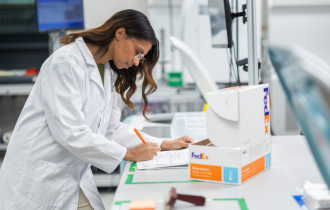
How Technology Is Shaping The Future Of Healthcare Logistics
From real-time data to predictive analytics, our digital technologies streamline the process of moving medical supplies and healthcare products.
Read More
How To Keep Your High-Value Shipments Safe And Secure
Here’s how your business can prevent costly damage and ensure safe, on-time delivery.
Read More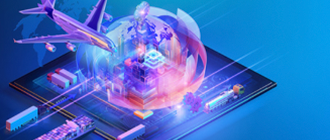
How Can Technology Deliver Superior Customer Service?
Logistics technology can help small businesses connect with their customers in new ways. Kawal Preet shares how healthcare businesses can grow.
Read More